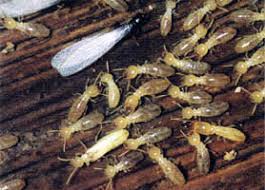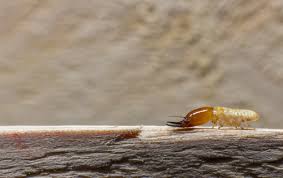An Unbiased View of Xtreme Termite Control
Boracare is a unique borate-based product which offers prevention and control for Termites, Carpenter Ants, Powderpost Beetles and Decay Fungi. Boracare can be used on most unfinished or raw timber including plywood, particleboard, and wood structural components. Boracare can also be utilized to prevent subterranean termites from forming tubes on surface such as concrete, block, brick, metals, and PVC plumbing pipes found in structures.
Please refer to the product label for the right use rate for your precise needs. Boracare should be mixed with warm water in a bucket until it's thoroughly dispersed in water. Boracare should never be mixed right in sprayers as the item is quite thick and will clog the sprayer if it's not premixed in hot water.


Topical, all raw wooden elements like fenceposts, decks, and new wooden siding can be treated. Do not use within 48 hours of rain or snow. For elements which will be subjected to rain and sunlight, wait at least 48 hours for Boracare to dry before painting, staining, or sealing using a water resistant product.
The 45-Second Trick For Xterm Termite Control
Termites can be one of the most damaging insects to your home. Theyre not just annoying, but they can actually damage the structural integrity of your most important investment. In the southern United States it is estimated that there can be anywhere from 15-25 active termite colonies in any given acre of land.
At Do My Own Pest Control we have all of the different pest control products you need to live pest free, even out of termites. .
Termites are a huge problem and a severe threat to this value and structural integrity of your property. But due to their reclusive nature, it can be hard to tell whether or not your house is troubled by these insects. Therefore you should know the following termite signs that might indicate a problem in your home and plan to act to get rid of them if they're present. .
Excitement About Termite Control Yellow Pages
The most common signs of termite infestation are a increased tunnel of grime also known as a termite mud tube that leads to the home that's under siege. These tunnels can also be found on the home itself, and are a surefire way of knowing that you have termites.
These tunnels also present a severe threat to the timber in your house, as it does not take long for these wood-destroying insects to create serious harm. .
Another of those tell-tale termite signs is finding their waste products around the wood in your home. It's generally a powder with the consistency and appearance of sawdust, and whether or not it appears near cracked or brittle timber, you can be sure you have a problem on your hands.
The Greatest Guide To Termite Control Yellow Pages
Any one of these signs of termite damage are reason enough to begin a termite treatment program straight away. .
The process for how to tell if you have termites is most easily done by looking to these two signs, although there are some additional methods that can help. Examining the true interior of your house in crawlspaces and underneath the house can tip you off if you find that the signs of termite in home.
There are three different kinds of termites which are go to this site likely to infest your home: Subterranean termites, drywood termites, and dampwood termites. Here's a short description of each kind.
Some Known Facts About Xterm Termite Control.
Subterranean: Main reproductives are black to light yellow-brown in colour; Wings are light or smoky grey to brown in colour with few observable veins; to 3/8 inch long. Secondary reproductives are white to cream in colour, wingless, or really short wings. Workers make up the majority of a colony and are white in color, wingless, and to 3/8 inch long.
Drywood: All these colonies contain a caste system of employees, soldiers and reproductives, that can be all up to inch longer than subterranean termites. Workers make up the majority of the colony; they are about 1/8 inch long, white to cream in color, visit their website and have no wings. Critics defend the colony against other insects which may attack the colony; they're white and wingless with large brown heads and jaws.
Dampwood: The Dampwood termite is sometimes known as the"rotten wood" termite and is connected with higher moisture content and wood decay. In 3/8" to" long, the dampwood termite is larger than the drywood and subterranean. Soldiers defend the colony against other insects that might attack the colony; they've a flattened brown head with long dark brown to black mandibles.